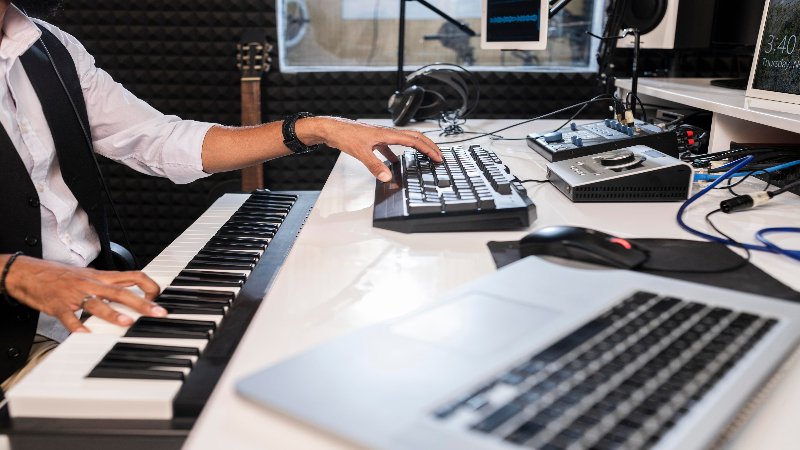Launching an online radio station is an exciting way to share your voice, connect with listeners, and join a global broadcasting community. But before you go live, having the right equipment in place is essential for smooth, professional-quality streaming.
Success in online radio is driven by high-quality technology just as much as creativity. The gear you choose affects audio clarity, reliability, and the overall listening experience. From microphones to mixers, the right setup determines whether your broadcast sounds amateur or expert.
Before your first broadcast, it’s crucial to research and select the right tools. For a comprehensive overview of what you’ll need, consult this helpful broadcasting tool resource to ensure your setup meets industry standards and your goals as a broadcaster.
A strong foundation—quality microphones, stable internet, dependable software, and supporting accessories—helps you avoid technical hiccups and deliver a seamless listening experience.
If you’re new to online radio or seeking expert tips, reliable sources like The New York Times Wirecutter’s podcast and radio gear guide offer trusted recommendations and real-user insights for your decision-making process.
Microphones: The Core of Clear Broadcasting
The quality of your microphone will directly determine how clear and professional your broadcast sounds. Choosing between dynamic and condenser microphones hinges on your recording environment and format. Dynamic microphones, such as the Shure SM58, are sturdy and less sensitive, making them perfect for locations that aren’t soundproofed.
This characteristic makes them ideal for home studios or portable setups. For those working in dedicated studio space, condenser microphones like the Audio-Technica AT2020 deliver exceptional audio fidelity, capturing richer and more nuanced sound—ideal for hosts who want studio-grade clarity.
Dynamic vs. Condenser Microphones
- Dynamic Microphones: Great at filtering background noise and tough enough for travel and live events.
- Condenser Microphones: High sensitivity means they pick up subtle vocals or instrumentals, but may also catch unwanted ambient sounds without a well-treated room.
A well-chosen microphone gives your project a professional edge, conveying authority and warmth to your listeners.
Audio Interfaces: Clean and Clear Digital Conversion
An audio interface is a gateway between your analogue microphone and a digital broadcast. It converts your vocal and audio inputs to a high-quality digital signal, minimising latency and ensuring clarity. The Focusrite Scarlett 2i2 is a standout model, offering reliability and straightforward connectivity for beginners and pros alike.
When shopping for an interface, look for built-in phantom power (necessary for many condenser microphones) and low-noise operation. This ensures your final stream is crisp, clear, and free from distracting hums or buzzes.
Mixers: Full Control Over Your Broadcast
Whether running a solo show or working with co-hosts and guests, a mixer elevates your control over sound levels and signal routing. Entry-level options like the Behringer Xenyx Q802USB are budget-friendly and offer enough features for most basic internet radio needs.
A sound mixer lets you balance volume, cue in music or calls, and apply basic EQ adjustments. If you plan to expand, look for mixers with multiple inputs and digital output compatibility for seamless integration with your other gear.
Headphones: Real-Time Audio Monitoring
Monitoring your audio in real time is essential for producing clean and professional broadcasts. Closed-back headphones, such as the Audio-Technica ATH-M50x, excel at sound isolation. This prevents unwanted audio bleed into your microphone and helps you catch any unexpected noises, glitches, or inconsistencies before your audience hears them.
Prioritise comfort in your choice—broadcasting sessions can be long, and a good fit reduces fatigue.
Broadcasting Software: The Heart of Your Online Station
Broadcasting software is the control centre of your online radio station. From auto-DJ features to live scheduling and playlist management, your choice of software determines how efficiently you can operate. Solutions range from beginner-friendly free platforms like BUTT and Mixxx to robust premium suites like SAM Broadcaster and RadioDJ.
Assess your requirements—automation, live call-ins, music library integration—and pick a solution that fits your technical comfort and station ambitions. Broadcasters can refer to industry overviews to compare trending software solutions and best practices for more profound insight.
Computers: Your Broadcasting Command Center
Your computer is the command hub for running all broadcasting software and hardware. Any computer used for online radio must offer ample processing power, RAM, and stable performance. Consider a dedicated desktop or laptop to avoid resource conflicts with everyday tasks.
Ensure your machine is updated, free from unnecessary bloatware, and regularly backed up to prevent data loss during crucial broadcasts.
Internet Connection: Consistent and Reliable Streaming
Uninterrupted streaming requires a high-speed and stable internet connection. At a minimum, an upload speed of 2 Mbps helps you avoid lag, dropouts, and buffering during live shows.
For higher-quality audio streams or simultaneous connections (for instance, streaming live and taking remote calls), even greater bandwidth—and a wired Ethernet connection over Wi-Fi—is recommended for reliability.
Additional Accessories: Small Tools for Big Results
To enhance your online radio setup, consider these accessories:
- Pop filters: Reduce harsh “P” and “B” sounds for clearer audio
- Shock mounts: Prevent low-frequency vibrations and noise
- Boom arms or mic stands: Adjust microphone placement for comfort
- Backup cables and USB hubs: Be prepared for unexpected hardware issues
These small but important additions improve audio quality and make your setup more efficient.
Final Thoughts
Crafting a professional online radio station requires more than enthusiasm and great programming—it requires understanding and investing in the right technology foundation. Well-chosen, reliable gear strengthens your broadcast quality and enhances your on-air confidence, readying your station for long-term success and growth.
See Also: The Role of Modern Apps in Detecting and Blocking Unknown Calls
